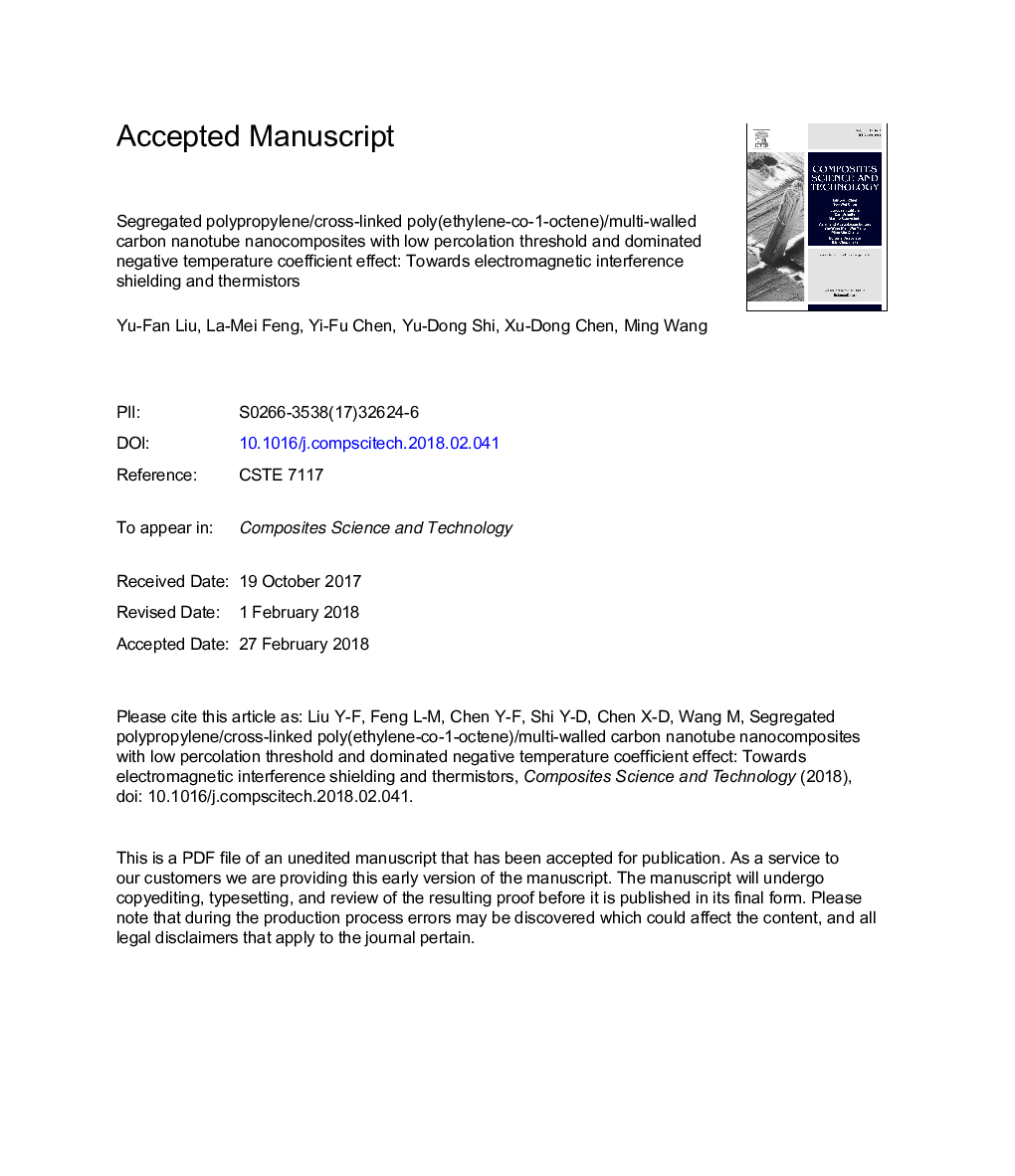| Article ID | Journal | Published Year | Pages | File Type |
|---|---|---|---|---|
| 7214553 | Composites Science and Technology | 2018 | 24 Pages |
Abstract
High-efficiently conductive networks have been well demonstrated to improve electrical properties of conductive polymer composites (CPCs). Here, a facile approach was introduced to control distribution of multi-walled carbon nanotubes (MWCNTs) in isotactic polypropylene/poly(ethylene-co-1-octene) blends (iPP/POE). The POE first melt-crosslinked by the addition of dicumyl peroxide, pulverized into small particles (40-60 meshes), then coated with iPP/MWCNTs composites, and finally compression molded to achieve the segregated iPP/POE/MWCNTs composites with MWCNTs confinedly dispersing in continuous iPP phase. This segregated structure could easily construct high-efficiently conductive networks, resulting in a low percolation threshold of 0.24â¯vol.%, high-performance electrical conductivity, and electromagnetic interference shielding effectiveness (EMI SE). For example, the EMI SE of â¼25â¯dB could be achieved in the segregated nanocomposites with 3.0â¯vol.% MWCNTs (thickness 1.2â¯mm) which reached the commercial requirement. Furthermore, the segregated samples also exhibited a relatively linear negative temperature coefficient (NTC) effect through wide temperature ranges of 45-120â¯Â°C and 150-190â¯Â°C because of anisotropic volume expansion effect caused by the segregated structure.
Related Topics
Physical Sciences and Engineering
Engineering
Engineering (General)
Authors
Yu-Fan Liu, La-Mei Feng, Yi-Fu Chen, Yu-Dong Shi, Xu-Dong Chen, Ming Wang,
